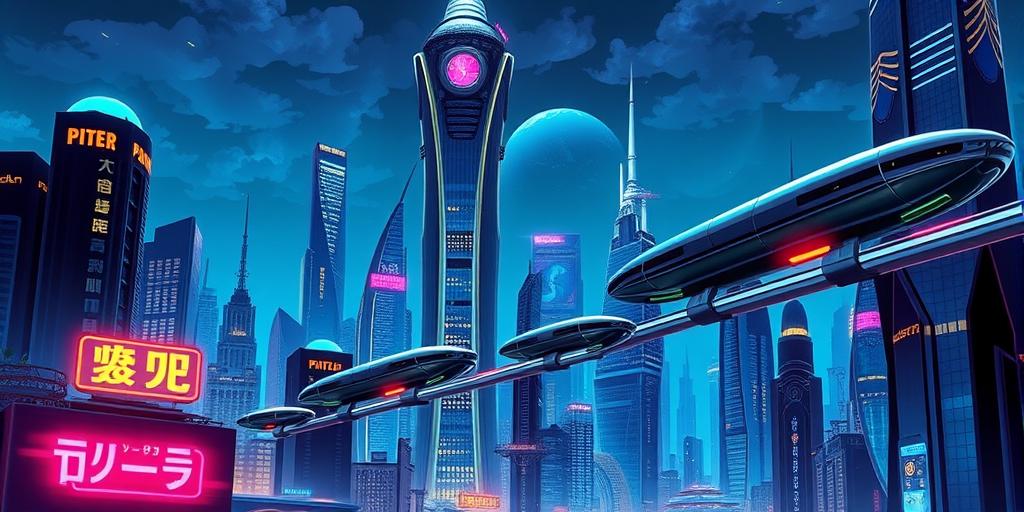In today’s rapidly evolving urban landscape, the Internet of Things (IoT) is no longer a futuristic concept but a transformative force, revolutionizing how we design, build, and manage our cities. Prepare to be amazed as we delve into the incredible impact of IoT on urban infrastructure development! From smart grids to intelligent transportation systems, the possibilities are endless and the potential benefits are truly breathtaking. Let’s explore how this technological marvel is reshaping our urban environments.
Smart Cities: The IoT Revolution
Smart cities leverage IoT technology to enhance various aspects of urban life, improving efficiency, sustainability, and the overall quality of life for citizens. This integration involves connecting various city infrastructure components, such as streetlights, traffic signals, and waste management systems, to a central network. This interconnectedness allows for real-time monitoring and data analysis, leading to better resource allocation and more responsive services. Imagine a city that anticipates your needs before you even realize them – that’s the power of IoT in action!
Enhanced Infrastructure Management
IoT sensors embedded within urban infrastructure can monitor structural integrity, detect potential failures, and trigger timely maintenance interventions. This predictive approach not only prevents costly repairs but also enhances the lifespan of crucial infrastructure components. By implementing IoT-enabled monitoring systems, cities can proactively address potential issues, reducing disruption and ensuring the safety and reliability of their infrastructure. This means fewer unexpected road closures and better overall infrastructure performance, leading to a smoother and more efficient urban experience for everyone.
Data-Driven Decision Making
The abundance of data generated by IoT devices enables urban planners and policymakers to make evidence-based decisions. Real-time data on traffic flow, energy consumption, and public transportation usage provides valuable insights into optimizing resource allocation and improving urban services. This data-driven approach allows cities to tailor their infrastructure development projects to meet the specific needs of their population, ensuring that resources are used efficiently and effectively. This also leads to more sustainable and resilient urban infrastructure, prepared to face the challenges of a rapidly changing world.
Intelligent Transportation Systems: The Future of Urban Mobility
Integrating IoT into transportation systems is streamlining urban mobility, making it safer, more efficient, and more environmentally friendly. Smart traffic management systems, for example, optimize traffic flow in real-time, reducing congestion and travel times. This is achieved through connected vehicles, smart traffic lights, and advanced analytics that predict and respond to traffic patterns. The result? Reduced commute times, less fuel consumption, and a decrease in harmful emissions, contributing to a cleaner and healthier environment for everyone.
Parking Management Made Easy
Finding a parking spot in a busy city can often feel like searching for a needle in a haystack, but not anymore! IoT-enabled parking systems offer real-time updates on parking availability, guiding drivers to open spots and reducing the time spent circling blocks. This technology not only improves the parking experience but also reduces traffic congestion caused by drivers searching for parking, making urban mobility significantly more efficient and less frustrating.
Public Transport Optimization
Real-time tracking and monitoring of public transportation vehicles enable more efficient scheduling and route optimization. Passengers are provided with accurate arrival times, and the system can adjust schedules based on real-time demand. This leads to improved punctuality, reduced wait times, and overall enhanced passenger experience, encouraging more people to opt for public transport instead of private vehicles, reducing congestion and improving air quality.
Energy Efficiency and Environmental Sustainability
IoT plays a crucial role in building more sustainable and environmentally friendly cities. Smart grids, enabled by IoT devices, monitor energy consumption in real-time, optimizing energy distribution and reducing waste. Smart street lighting systems adjust lighting levels based on ambient light conditions and traffic flow, saving energy and reducing light pollution. The environmental benefits are undeniable, contributing to a greener, more sustainable future for urban environments.
Waste Management Improvements
Smart waste management systems utilize IoT sensors to monitor the fill levels of waste bins, allowing waste collection services to be optimized, reducing costs and minimizing overflowing bins. This ensures better hygiene, prevents environmental hazards from overflowing bins, and contributes to a cleaner and more aesthetically pleasing urban environment.
Water Conservation
IoT-enabled water management systems monitor water usage in real-time and detect leaks, leading to significant water conservation. Smart irrigation systems adjust water usage based on weather conditions, further reducing water consumption and minimizing waste. This leads to significant cost savings and contributes to the sustainable use of precious water resources in urban areas.
The Future of Urban Infrastructure Development with IoT
The integration of IoT in urban infrastructure development is still in its early stages, yet its potential is immense. As technology continues to evolve, we can anticipate even more innovative applications of IoT in urban planning and management. From predictive maintenance to enhanced security and public safety systems, the future of urban infrastructure is bright, connected, and incredibly smart. Embracing this technology is key to building more livable, sustainable, and resilient cities for generations to come.
Ready to build a smarter future? Contact us today to explore how IoT can revolutionize your urban infrastructure development projects!




